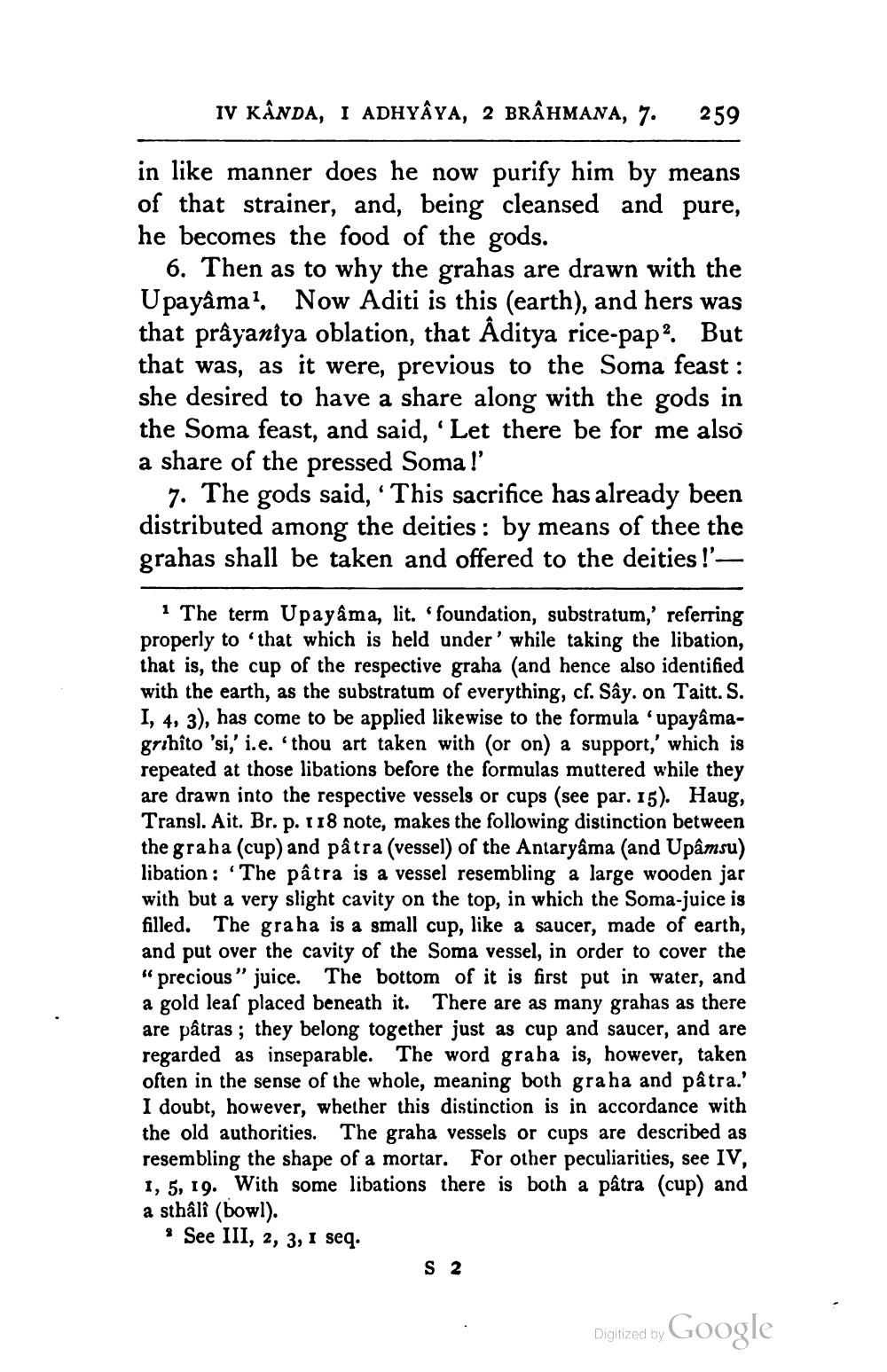________________
IV KÂNDA, I ADHYAYA, 2 BRÂHMANA, 7.
259
in like manner does he now purify him by means of that strainer, and, being cleansed and pure, he becomes the food of the gods.
6. Then as to why the grahas are drawn with the Upayâma?. Now Aditi is this (earth), and hers was that prầyaniya oblation, that Aditya rice-papa. But that was, as it were, previous to the Soma feast : she desired to have a share along with the gods in the Soma feast, and said, 'Let there be for me also a share of the pressed Soma!'
7. The gods said, 'This sacrifice has already been distributed among the deities: by means of thee the grahas shall be taken and offered to the deities !'—
The term Upayama, lit. 'foundation, substratum,' referring properly to that which is held under' while taking the libation, that is, the cup of the respective graha (and hence also identified with the earth, as the substratum of everything, cf. Sây. on Taitt. S. I, 4, 3), has come to be applied likewise to the formula 'upayamagrihito 'si,' i.e. thou art taken with (or on) a support,' which is repeated at those libations before the formulas muttered while they are drawn into the respective vessels or cups (see par. 15). Haug, Transl. Ait. Br. p. 118 note, makes the following distinction between the graha (cup) and pâtra (vessel) of the Antaryâma (and Upâmsu) libation : "The pâtra is a vessel resembling a large wooden jar with but a very slight cavity on the top, in which the Soma-juice is filled. The graha is a small cup, like a saucer, made of earth, and put over the cavity of the Soma vessel, in order to cover the "precious" juice. The bottom of it is first put in water, and a gold leaf placed beneath it. There are as many grahas as there are pâtras; they belong together just as cup and saucer, and are regarded as inseparable. The word graha is, however, taken often in the sense of the whole, meaning both graha and pâtra.' I doubt, however, whether this distinction is in accordance with the old authorities. The graha vessels or cups are described as resembling the shape of a mortar. For other peculiarities, see IV, 1, 5, 19. With some libations there is both a pâtra (cup) and a sthâlî (bowl). * See III, 2, 3, 1 seq.
S2
Digitized by Google




